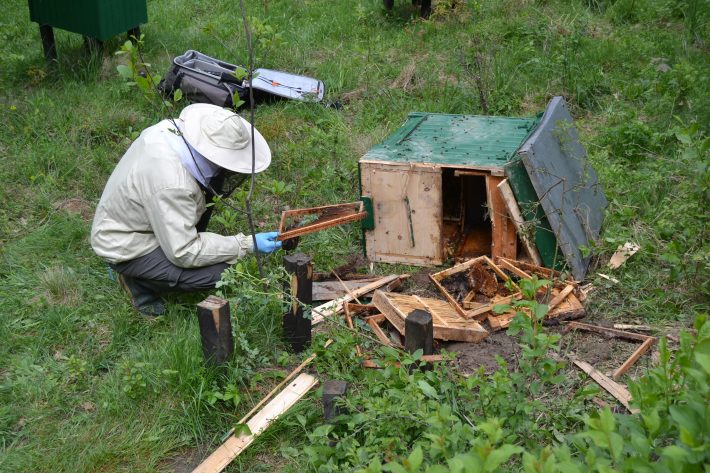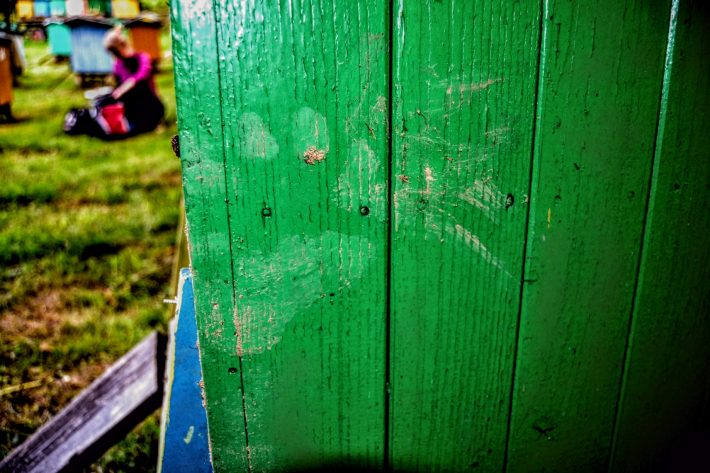Only a few bears responsible for beehive human-wildlife conflicts in Poland
A team of researchers has figured out a way to track the DNA left by brown bears guilty of breaking into aviaries in Poland to reveal the exact culprits – an important aspect of solving conflicts between humans and wildlife.

The Carpathian forest in Poland is known to be inhabited by brown bears, in fact, they are responsible for around 52 incidents of damage in the region per year. 92% of these damages occur in apiaries – specialized facilities where bees are kept in hives to produce honey and provide pollination services for agriculture.
In 2014, researchers descended upon the region to investigate an incident where 15 hives had been damaged in a single apiary. The team, from the Institute of Nature Conservation at the Polish Academy of Sciences, arrived at the scene with the aim of extracting DNA which would identify the individual bears responsible for the destruction.
The scientists collected all biological samples present at the site, including hairs and faeces. These samples were then transported to a lab in Krakow, where analysis determined that a female bear with two cubs was responsible. Three years later, she was also identified as the perpetrator of two more similar incidents.
Over the next four years, researchers visited 209 sites presumably damaged by bears. 146 biological samples were collected across these sites and analysed in the lab like before.
In parallel to the first instance, the team also conducted a year-long systematic genetic sampling across the region. This was not an easy task as brown bears tend to be rare and move over large areas. The bears had to be baited using hair traps with an attractive scent, provoking the bears to rub against them. Eventually, using complex statistical models, the researchers were able to provide the first accurate number of brown bears living in the Eastern Poland Carpathians.
Teresa Berezowska-Cnota, lead author of the study states “We found that out of an average of 72 bears living in the region, just one-third break into apiaries.”
Despite this, not all individuals were identified at damage sites with equal frequency.
“Of the bears breaking into apiaries, about 33% were repeat offenders. This means that only a small fraction of the population could be classified as ‘problem’ individuals,” Berezowska-Cnota continued.
The current common thought is that if an individual has behaved badly once, they will do it again. However, this study, published in the British Ecological Society Journal of Applied Ecology, has proven brown bears to be the exception.

This study has important implications for wildlife conservation and for the management of conflicts between humans and wild animals. Nuria Selva, the senior author of the study, commented “Humans still have a lot to do in terms of damage prevention. Most apiaries and livestock are not properly protected in areas inhabited or being recolonized by large carnivores, which is like leaving the door open for conflicts.”
The study points out that understanding the individual aspects of conflict behaviour through population-wide studies should be a priority in applied ecology and conservation. “Without identifying the particular animals involved in conflicts and understanding their behaviour, conflicts cannot really be resolved,” concluded Selva.
This article has been adapted from an Institute of Nature Conservation press release.
Read the full paper here:
, , , , , , , , , , , , , & (2023). Individuality matters in human–wildlife conflicts: Patterns and fraction of damage-making brown bears in the north-eastern Carpathians. Journal of Applied Ecology, 00, 1– 12. https://doi.org/10.1111/1365-2664.14388
Like what we stand for?
Support our mission and help develop the next generation of ecologists by donating to the British Ecological Society.